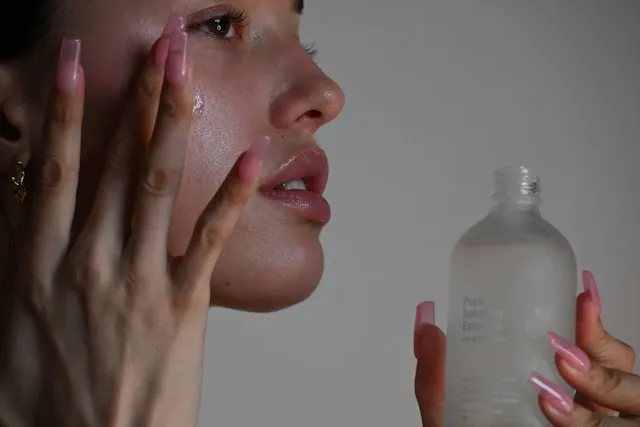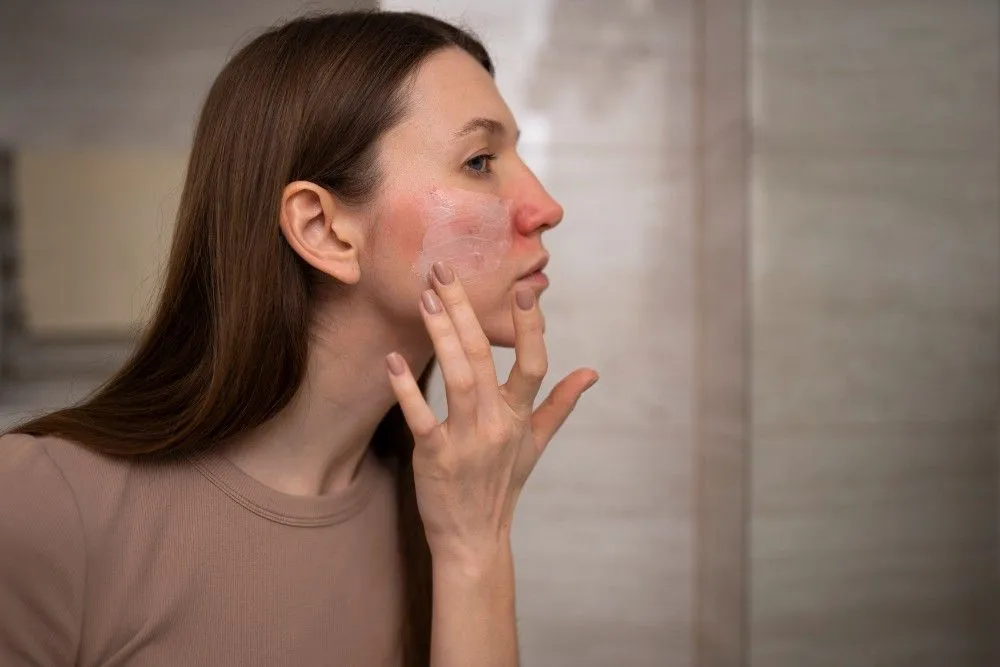Skin ages in a steady, predictable way. Fine lines deepen. Texture grows uneven. Sun leaves its mark. Today, patients want visible change without surgery and without weeks of hiding at home. In that search, fractional CO2 laser resurfacingcontinues to deliver reliable, measurable results. It improves wrinkles and scars, brightens tone, and tightens surface texture in a single, well planned session.
This article explains how the procedure works, who benefits most, what recovery looks like, and how it stacks up against other options. It also summarizes what recent medical literature has found, without linking out, while noting the type of sources and the years they were published.
A brief history of laser resurfacing
CO2 lasers entered dermatology in the late 1960s and 1970s. Early systems used continuous energy that removed broad layers of skin. Results were strong, but downtime was long. Then, in the mid-2000s, engineers introduced fractional scanning. Instead of treating the entire surface, the beam created microscopic columns in a pattern. Untreated skin around each column sped up healing. Dermatology journals from 2007 onward reported lower risk, shorter recovery, and durable collagen remodeling. Over the 2010s, the approach matured with better scanners, shorter pulse durations, and improved cooling. As a result, physicians gained finer control and patients enjoyed more predictable outcomes.
How the technology works
During a session, the device delivers pulses of carbon dioxide light to the epidermis and upper dermis. The energy vaporizes damaged cells and creates narrow channels of controlled thermal injury. These channels stimulate fibroblasts to lay down fresh collagen and elastin. Because the pattern is fractional, islands of intact skin remain between channels. Those islands act like bridges that support faster re-epithelialization.
Topical anesthetic is common. Providers can add cooling air, nerve blocks, or light oral medication if needed. A typical face treatment takes 30 to 60 minutes. Neck and chest require additional time due to thinner skin and lower energy settings. The procedure is methodical and precise, and modern handpieces help maintain even coverage across curved areas like the jawline and perioral lines.
What it treats best
- Etched lines around the mouth and eyes
- Static wrinkles across the cheeks and forehead
- Acne scars, including rolling and boxcar patterns
- Sun damage with mottled tone and rough texture
- Enlarged pores and laxity along the jawline
- Stretch marks on the body and residual surgical scars
Dermatology reviews from the last decade consistently note high patient satisfaction when the indication, settings, and aftercare match the skin type and concern. That alignment matters more than any single energy number on the device screen.
Safety, candidacy, and screening
Safety begins with a thorough consultation. Providers review medical history, medications, and recent skincare. They look for active infection, impaired wound healing, keloid tendency, recent isotretinoin use, pregnancy, and uncontrolled autoimmune disease. They also screen for a history of pigment problems. If the risk profile is high, they adjust settings or choose a gentler option.
A 2021 consensus statementin procedural dermatology literature emphasized the value of pre-treatment priming in higher Fitzpatrick skin types. Short courses of pigment-balancing creams and strict sunscreen use lowered the risk of post-inflammatory hyperpigmentation. Furthermore, a 2023 randomized study compared two aftercare routines and found that diligent barrier repair in the first seven days shortened visible downtime and reduced redness. These findings match day-to-day clinical experience: preparation and aftercare often matter as much as the energy delivered.
Recovery in real life
Healing follows a clear timeline. Day one to two brings warmth and swelling. By day three, bronze flaking appears. Most patients complete the peeling phase by day five to seven. Pinkness lingers, yet makeup usually conceals it after the first week. Hydration and barrier protection remain the focus for two weeks. Collagen remodeling builds under the surface for months.
Results unfold in stages. Texture and glow improve first. Next, pore size and fine lines soften. Deeper wrinkles and scars change over several months. Many patients see their best result at three to six months as new collagen matures. With careful sun protection and a simple routine, improvements can last several years.
Comfort measures that actually help
Patients want a clear plan for comfort. Providers usually apply a topical anesthetic 30 to 45 minutes before treatment. Cool air during the session helps. For sensitive areas, small nerve blocks around the lips or eyes can reduce sharpness. After the session, a thermal water spray and bland occlusive support the first 48 hours. Over-the-counter pain medicine is usually enough. Most patients describe the sensation as a sunburn that settles quickly.
How it compares to other options
- Erbium lasers: Remove thinner layers of tissue and can smooth mild to moderate texture with less heat. Downtime is shorter, yet tightening effect is smaller.
- Microneedling: Promotes collagen through mechanical injury. Results are subtle per session and build over a series.
- Radiofrequency microneedling: Adds heat into the dermis. It tightens and improves scars but does not resurface the top layer the way CO2 does.
- Chemical peels: Brighten and smooth the surface. Medium and deep peels can approach laser results in skilled hands, but they do not provide the same controlled depth uniformity.
- IPL and gentle lasers: Target brown and red color. They improve tone but do not address etched lines or deeper scars.
When patients want both resurfacing and tightening with fewer total visits, fractional CO2 laser resurfacing remains the most comprehensive single-session choice.
Skin type considerations
All skin types can benefit with proper planning. For Fitzpatrick IV to VI, providers take extra steps. They may use longer intervals between passes, lower energy, and conservative density. They also prime the skin with pigment-balancing actives and enforce strict sun avoidance. In 2019 and 2022, dermatology reviews outlined protocols that reduced the risk of pigment shifts while preserving outcomes. The key is individualization. Skin that tans easily needs a different approach than skin that burns.
Combination strategies that raise the ceiling
- CO2 plus PRP or growth factor serums to support healing
- CO2 plus light vascular lasers to calm persistent redness after recovery
- CO2 plus RF microneedling months later to add deeper tightening
- CO2 plus targeted pigment lasers for stubborn brown patches
Literature from 2018 through 2024 discusses these staged plans. Sequencing and spacing matter. Providers avoid stacking aggressive treatments too close together. The result is a smoother journey with fewer side effects and more durable change.
Pre-treatment and post-treatment playbook
Before treatment
- Pause exfoliants and retinoids several days ahead unless instructed otherwise
- Use broad-spectrum SPF daily and avoid sun for at least two weeks
- Start any priming creams if prescribed
- Arrange a light week after your session for recovery
After treatment
- Cleanse with a gentle, fragrance-free product
- Keep the skin moist with a bland occlusive for several days
- Do not pick or scrub flaking skin
- Avoid hot yoga, steam rooms, and intense workouts for the first days
- Resume actives only when your provider clears you
- Maintain daily SPF and smart sun habits long term
Sessions, cost, and expectations
Most patients complete one to two sessions for facial rejuvenation. Scar patterns or severe sun damage may need a staged plan over several months. Cost varies by region and by the areas treated. Providers often price face, neck, and chest separately because settings and time differ for each zone. Useful rule of thumb: bigger zones and deeper settings require more recovery and more aftercare supplies, but they also deliver more noticeable change.
Clear expectations reduce stress. The aim is improvement, not perfection. Wrinkles soften. Scars flatten. Tone brightens. Pores look smaller. Patients look rested and more even. They do not look pulled or overdone because the procedure renews tissue rather than changing facial structure.
Myths and facts
-
Myth: CO2 always means two weeks at home.
Fact: Fractional methods cut downtime to about five to seven days for most face treatments, with makeup allowed after the first week. -
Myth: Darker skin cannot have CO2 resurfacing.
Fact: With conservative energy, priming, and strict sun protection, higher Fitzpatrick types can achieve good results. Careful protocols published between 2019 and 2022 support this. -
Myth: Results fade in a few months.
Fact: Collagen remodeling continues for many months. With proper care, improvements often last for years. -
Myth: At-home devices can replace clinical lasers.
Fact: Consumer tools cannot match the precision, depth control, or safety systems of a medical CO2 platform.
Why many clinicians still choose it first
Despite a crowded field of new gadgets, physicians keep turning to fractional CO2 laser resurfacing for patients who want visible change. The reasons are practical. The science is mature. The devices are consistent. The outcomes are reproducible across different clinics when training and protocols align. Reviews published in 2015, 2018, 2021, and 2023 all point to the same conclusion. When the indication fits and the plan is sound, patient satisfaction stays high.
Special areas: eyes, mouth, neck, and chest
Periorbital lines and lower eyelid crepe often respond well because the skin in that area is thin and collagen-rich. Perioral barcodes soften with careful passes and can pair well with light filler touch-ups after healing. The neck and chest require lower energy to respect thinner skin and vascularity. As a result, they may need staged sessions. Still, patients appreciate the uniform tone and smoother texture that spread across visible areas.
Men and laser resurfacing
Men seek natural results and quick returns to work. Beards require attention because dark hair absorbs energy. Providers adjust settings and sometimes ask patients to shave closely before treatment. Many men choose a long weekend for recovery, then return to the office with light pinkness that makeup or tinted sunscreen can hide. As awareness grows, more men treat acne scars and sun damage with strong satisfaction scores reported in clinic audits over the last five years.
Long-term care that protects your investment
Great results deserve simple, consistent care. Daily mineral SPF, a gentle cleanser, and a fragrance-free moisturizer cover most needs. Add a vitamin C serum in the morning and a retinoid at night once healing is complete. Schedule color-correcting treatments like IPL only if needed for redness or scattered sun spots months later. Small, steady habits preserve the change you worked for.
The road ahead
Device makers continue to refine pulse shapes, scanning patterns, and cooling. Studies from 2020 to 2024 describe shorter pulse stacks that deliver less heat while maintaining ablation. The trend is clear. New platforms aim for similar or better outcomes with less discomfort and shorter visible downtime. At the same time, training quality and protocol consistency remain central. Technology helps, yet technique still wins.
Key takeaways
- The treatment renews both surface and deeper layers to improve lines, scars, tone, and texture.
- Recovery averages five to seven days for the face, with makeup after the first week.
- Careful screening, priming, and sun protection reduce risk and improve results.
- Compared with lighter options, it offers stronger single-session change and long-lasting benefits.
- Combination plans and steady skincare extend and refine outcomes over time.
Final word
Healthy, confident skin comes from smart choices. For patients who want visible improvement without surgery, fractional CO2 laser resurfacing remains a proven path. It blends science, precision, and artistry. With the right plan and the right aftercare, you can expect smoother texture, brighter tone, and a clearer reflection of how vibrant you feel inside.
Reviewed by







